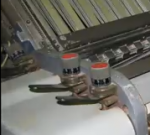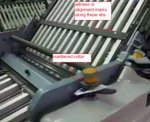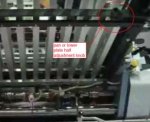Dear John,
Thanks for your amazingly prompt reply. I am impressed!! I agree that the age of the machine shouldn't have any bearing as long as parts are not worn out. Our strength lies on the printing side and we are all a bit weak and inexperienced with folders, hence the request for help.
1. The probs antedate the re-rubbering and I put it down to worn rubber. The rollers were re-rubbered professionally by a roller company and taken out and refitted by me. I set the roller pressures and I have tried all sorts of settings. The feed belt was changed by one of the lads, not an engineer. It appears to be self-tensioning. Am I right?
2. I have paid careful attention to the sheet entry at the notch on the guide and it looks perfect to me. I have centred the guide and also tried it at different angles.
3. The side guide has not been replaced. It is almost certainly as old as the machine.
4. We do have the problem folding with the grain but I think to a lesser extent and I think it is less with lighter paper eg 80gsm. Inevetably as we print B2 A4s are always cross-grain. Mostly we fold 130 - 170gsm, usually silk.
5. It seems no better even at the lowest speed (or the top speed)
6. I have been careful to have the paper in the feeder the right distance to pull accross into the side guide, and I have adjusted the distance of pull to no avail.
Originally I put the problem down to lack of grip in the rollers, hence the re-rubbering, then I have tried any combination of plates, then I have looked at sheet entry. Can't see anything wrong but I am convinced that a solidly built and engineered machine like mine should fold beautifully. Our Heidelberg presses of a similar vintage print excellent work every day, but as I say they are operated by professionals, which I admit is not the case with the folder, though we do at least know how to set up a simple roll fold. I have had a general print engineer have a look but he just said 'well what can you expect with an old machine?' I don't buy that myself.
Thanks again for your help.
Peter
I have tried a mixture of some steel, some plastic and all of each type to no effect.
















